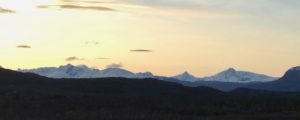by Adrienne Banks, of Williams College
Patagonia Study Abroad – Fall 2019 Semester
This past week, Mikkel, Kenzie and I spent a week on the huge campo (farm) of Irene and Benedicto, about a 30-minute drive south of Cochrane. Within about 30 minutes of arriving, we were drinking mate with Benedicto and trying to understand Spanish where so many consonants are dropped, people are mumbling, and speaking so fast!
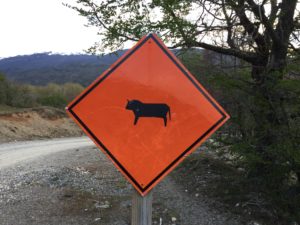
They have about 500 sheep, 150 cows, 50+ chickens, some ducks, some turkeys, some dogs, and some horses. Sadly, none of their cows we saw were unicorns, but the babies were very cute.
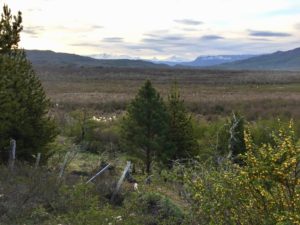
They also have 800 hectares of land. We decided it seems like a lot but we’re not sure exactly how much. Editor’s note: 800 hectares is 1976 acres. This campo is also located on the Rio Salto, with water coming in clean enough to be used and drank directly!
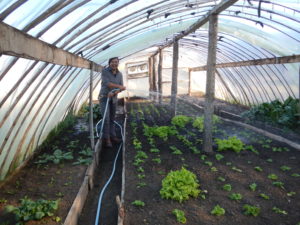
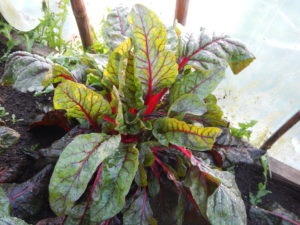
They have three greenhouses (invernadores) in which lettuce, chard, and herbs are growing.
One day we got to water the greenhouse and it prompted our Monday word of the day, la acelga (chard) which excited Kenzie a lot.
Also on their property is a large gravel extraction operation; when the river rises there become banks of gravel that is then dredged and sorted, including at a spot about 100 m in front of their house.
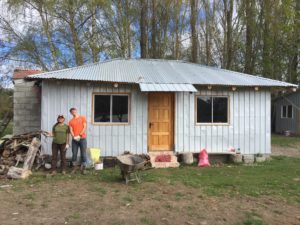
We stayed in a giant quincho (living space) with a wood stove, a bathroom, and a ginormous fireplace that they use for asados (community gatherings around the roasting of an animal). The quincho is a part of a blossoming tourism operation that Irene and Benedicto are starting. Next door is a shower and some bathrooms, and behind us there are camping spaces that they’re developing, with firepits and picnic tables, right on the river. They told us that the nearby Calluqueo glacier and Cerro San Lorenzo are big tourism draws, and that they’re currently relying on passersby and word of mouth to spread the word.
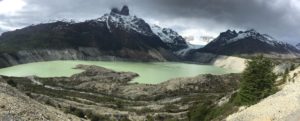
Much of what we did over the week was a sort of spring cleaning – we did a lot of raking – leaves, willow boughs, getting wool out of the grass, rocks, cow and sheep bones, and dead strawberries, among other things. Because of this, our Tuesday word of the day was la carretilla (wheelbarrow) for the number of wheelbarrow trips we made. Which brings us to our Wednesday word of the day, la rabosa (slug)! We found many slugs while raking leaves behind the quincho.
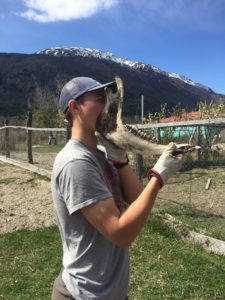
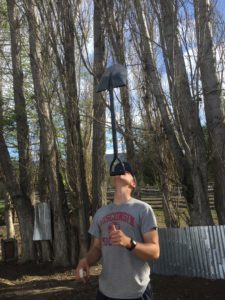
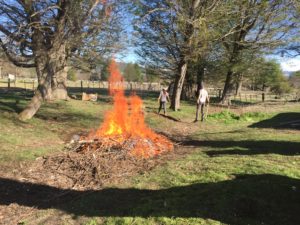
Over the course of the week we raked and burned 4 or 5 giant piles, piles that included not only yard debris but also a fair bit of glass, plastic, and metal!
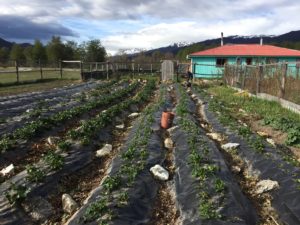
Our other primary task of the week was quitando secos (removing the dead/dry ones aka pruning) from frambuesas (raspberries) and frutillas (strawberries) bushes.
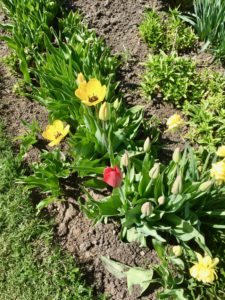
Over the course of the week, spring became a reality in their valley! The hills got much greener and their beautiful front yard became full of blooming flowers! On Thursday, many of the tulips bloomed for the first time, prompting las tulepas (tulips) as the word of the day.
Perhaps the biggest adjustment for the week was our schedule and meals – although we offered, they kindly told us we didn’t have to get up to do chores with them at 6:30am, and instead met them for breakfast of bread, hot drinks, and eggs at 8:30am. After that, we’d do work until 1pm, have a giant lunch of usually soup, beans, a main dish, bread, and some veggies. My favorite was a chard “tortilla” or frittata that we had with soup and rice and potatoes and beets and lettuce and bread and juice. At lunch we ate so well! We then had a siesta time until 3:30pm, with the rationale that it is too hot to work. We found it great timing because many of the days we left the big meal really needing to be horizontal. At 3:30pm we’d continue working, until 6:30 or 7, at which point we’d hang out until a snacky dinner at 9pm, with more bread and jam and hot drinks. Unlike our expectations of Chilean time being quite relaxed and running late, we were always expected to be punctual and were chastised (jokingly) when we arrived to breakfast late!
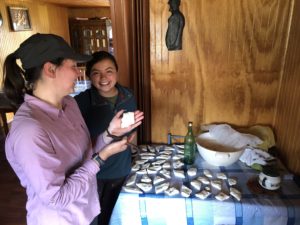
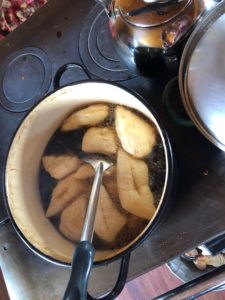
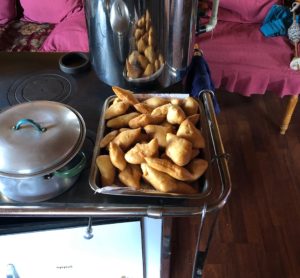
Other highlights from the week included making sopapillas – the dough is simple, only needs to rise for half an hour, and all you have to do is cook them in boiling animal fat until they’re golden brown!
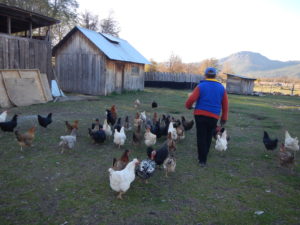
Watering the greenhouses and collecting chicken (and duck) eggs was also a treat, and we witnessed the shearing and killing of a sheep, from which we ate the following several days! (We walked away after the shearing but stood a distance away and some of us peered through binoculars with curiosity about the killing…).
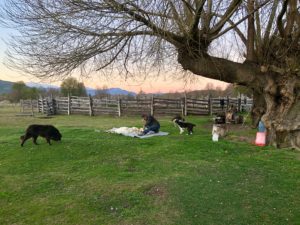
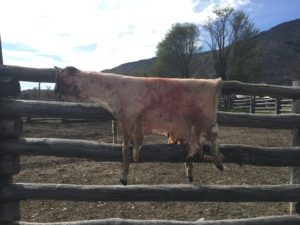
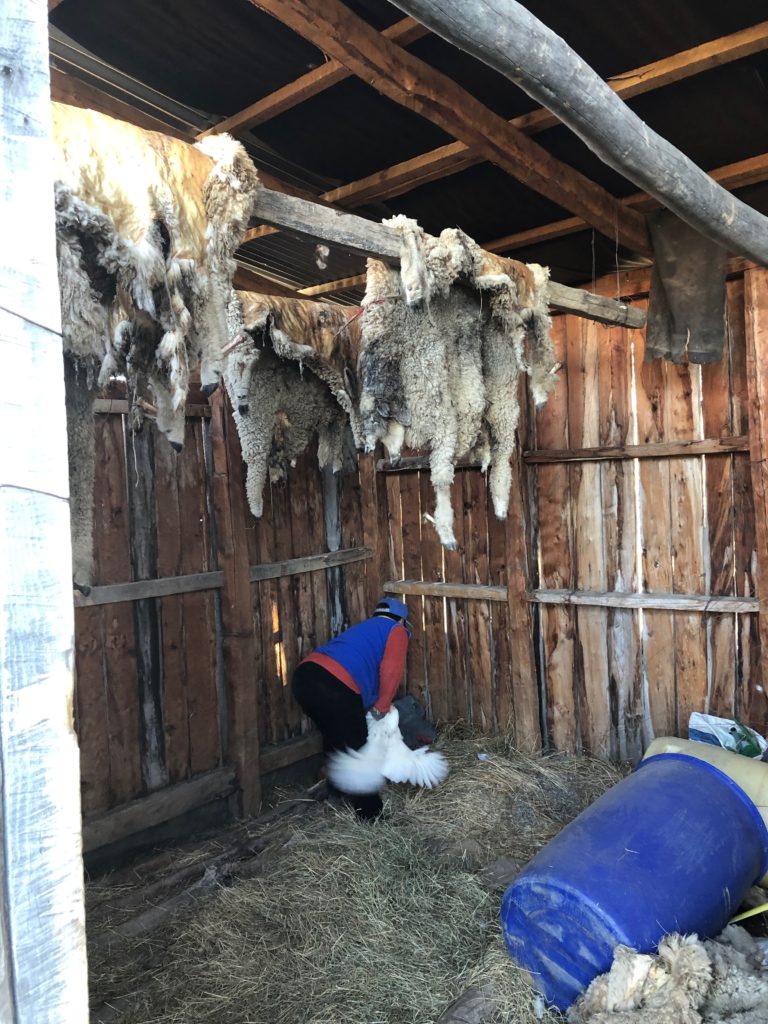
Much of their family’s income appears to be from wool, which is exported first to Uruguay then China.
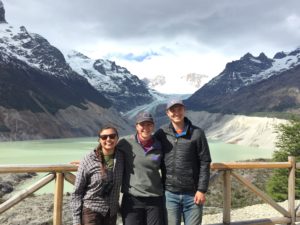
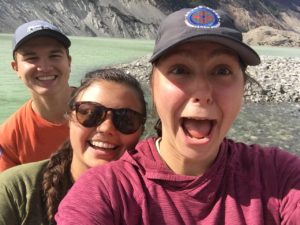
Another one of the highlights of the week was a visit to Calluqueo Glacier on Friday with Irene, her grown son, and her grandson! It was the most beautiful day and they were so proud to show it to us.
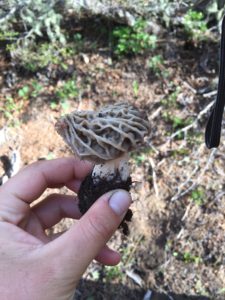
After, we went looking for morel mushrooms! Ignacio (Irene’s son) knew several places just off the side of the road and we found upwards of 25 pretty quickly! We also got to say a quick hello to Eliana and Anna at their homestay on our way home, and meet their cute cute baby goats, sheep, puppies, and more.
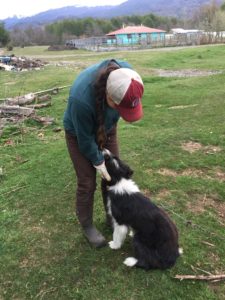
After settling into our new routine for a week, it’ll be a jolt to not nap every afternoon or drink mate at 3pm in our quincho! We have had a lifetime’s worth of various kinds of bread and we’d like to think that our understanding of campo Spanish (fast, mumbly, and without many of the distinctive letters) has improved. We would also like to report that we’ve improved our ability to greet with cheek/side kisses and learned that “buen provecho” is said after (not before) the meal in their house. Next, we’re excited to head to Pascua and Jeinimini, respectively, and hear the stories of the other homestay experiences. And a big muchas gracias a Irene, Benedicto, and la tía who cooked such good food for us!
